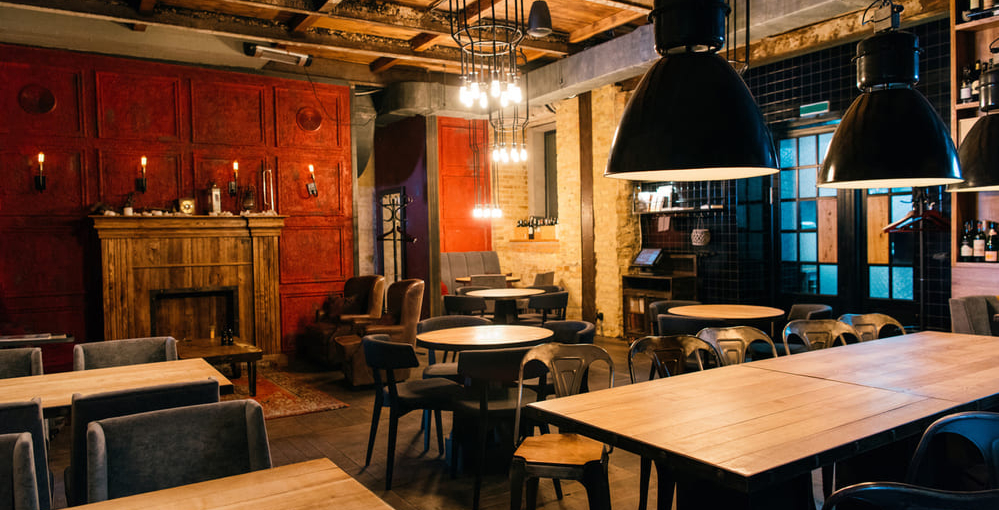As a member of the hospitality industry, you likely understand the importance of creating the right ambiance for your customers. One of the key elements in achieving this ambiance is choosing the right size and shape for your bar tables. It may sound minor, but this small detail can make a significant impact on your customers’ experience. The right table will complement your space, making it feel comfortable and roomy, while the wrong table can make your space feel overcrowded and stuffy, or, on the other hand, empty and sparse.
Today, we’ll share our favorite steps for choosing the right size and shape for bar tables for your hospitality establishment and touch on the importance of proper spacing between tables. Let’s dive in!
The Importance of Dimensions and Layout
It’s important to understand why dimensions and layout matter. Here are some key points to consider:
Comfort and Space: The right-sized tables ensure that your guests have enough room to feel comfortable. Whether they are dining or enjoying a drink, overcrowded spaces can be uncomfortable, whereas spacious layouts create a relaxing and enjoyable atmosphere.
Aesthetic Appeal: Tables that are proportionate to your space enhance the overall look and feel. The wrong size can disrupt the visual harmony and make your place seem disjointed or cluttered.
Accessibility: Properly spaced tables make it easier for your staff to serve customers efficiently. They also ensure that customers can move around without bumping into each other or struggling to find their way to the restroom.
Regulatory Compliance: Some municipalities have specific regulations regarding the spacing between tables, especially in today’s world, where social distancing might be a factor to consider.
So, how do you choose the right bar tables to suit your space? Here are some steps that can help:
Steps for Choosing the Right Size and Shape of Bar Tables
- Measure Your Space
The first step in selecting the right bar tables is to measure your space. Use a tape measure to determine the exact dimensions of your restaurant or bar area. Measure the length and width of the available space, taking note of any architectural features like columns or wall projections that might affect table placement.
- Determine the Table Shape
Once you have your space measurements, consider the shape of your tables. The most common shapes for bar tables are round, square, and rectangular.
Round Tables: Round tables work well in smaller spaces, as they allow for a smoother flow of movement. They encourage conversation and are great for cosy settings.
Square Tables: Square tables are versatile and can be pushed together to create larger seating arrangements or used individually. They are a great choice for maximising space.
Rectangular Tables: Rectangular tables are ideal for long, narrow spaces and can accommodate more guests in a linear layout.
- Calculate Table Size
Now that you have your space measurements and table shape in mind, it’s time to calculate the ideal table size. The general rule is to allow approximately 60-75 cm of space per person for comfortable seating. This includes both the table and the space around it.
For example, if your space allows for a rectangular table that seats six people, you will need a table that’s approximately 180-225 cm long. For a round table, you might choose one with a diameter of 150-180 cm to comfortably seat six.
- Consider Bar Height
Bar tables typically come in two heights: standard dining height (about 75 cm) and bar height (about 105 cm). The height you choose depends on the type of seating you want to offer. Bar-height tables are perfect for standing or high stools, creating a more casual atmosphere, while standard dining-height tables are better suited for traditional dining chairs.
- Allow Adequate Spacing
Once you’ve determined the size and shape of your bar tables, it’s important to ensure there’s proper spacing between them. A good rule of thumb is to leave at least 60-75 cm of space between tables. This spacing provides enough room for customers and staff to move around comfortably without feeling crowded.
- Test the Layout
Before making any final decisions, consider setting up a mock layout in your space using placeholders or cardboard cutouts to represent the tables. Walk around the space to confirm that the layout feels right and that there’s adequate room for customers and staff to navigate without any bottlenecks.
- Seek Professional Advice
If you’re still unsure about the right table sizes and layout for your space, don’t hesitate to seek professional advice. Interior designers or furniture experts with experience in the hospitality industry can provide valuable insights and help you make the best choices for your unique establishment.
Choosing the right size and shape for bar tables is an important aspect of creating a welcoming and comfortable atmosphere in your business. At Have a Seat, we understand the importance of finding the right furniture for your hospitality business. We offer a wide range of bar tables in various styles to suit your unique needs. If you need assistance in selecting the perfect bar tables for your space, contact our team today.
Here’s to creating a successful and inviting bar or pub space!

